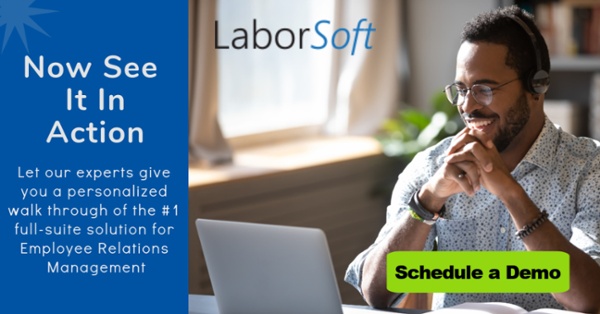5 Labor Union Rules and Regulations Employers Should Know
Read Time 4 mins | Nov 2, 2023 | Written by: Frankie Kourtis

The National Labor Relations Act (NLRA) governs the employer-union relationship. The labor union rules and regulations described inside set the boundaries for what employers and unions are allowed to do to pursue their respective goals.
In essence, employers cannot interfere with the rights of workers to organize or join unions, and labor unions likewise cannot coerce employees to join or support the union. However, there are many specific rules and circumstances to be aware of if you want to stay compliant with the law and avoid problematic complaints or legal quandaries (either from employees or from the union itself).
Look Out For These 5 Labor Union Rules and Regulations
-
You cannot in any way threaten or intimidate employees who are interested in joining or voting for unions.
This is true even if you’re attempting to “get ahead” of a future unionization effort, and no employees have even brought up the subject of labor unions yet. Employees have the right to organize, and the NLRA protects all concerted activities related to unionization and worker organization. Employers who threaten employees with the loss of their jobs, their benefits, or even merely intimidate the employees with the possibility of negative implications due to union-related activities can quickly find themselves in hot water.
-
You cannot discipline, fire, or retaliate against employees because they’ve engaged with unions.
Be extremely careful when situations arise that call for transferring, reassigning, or terminating employees who are important union members or who have recently engaged with union representation — especially if they’ve filed unfair labor practice charges. All disciplinary actions, HR complaints, and employee issues should be carefully documented and attributed in internal case management systems. This way there is always clear evidence and a paper trail to establish when potential union-related activity is unrelated to a given case, should this come into question.
-
You must come to the table in good faith to negotiate a Collective Bargaining Agreement (CBA) with a union.
Employers may wish they didn’t need to compromise with a union in order to agree upon a contract. However, the NLRA guarantees the right of the union to bargain about mandatory subjects, including but not limited to:
- Wages
- Hours
- Vacation time
- Insurance
- Safety practices
Once employees choose a union as their bargaining representative, you are required to meet with the union (at reasonable times — do not set unreasonable expectations/hours for meetings in order to discourage talks) to discuss these subjects and bargain in good faith.
-
You may declare an impasse in labor union negotiations, but only if no agreement is possible.
You must make a genuine effort to negotiate. However, if no agreement can be reached, an employer is within their NLRA rights to declare an impasse. Make sure that you’ve exhausted your options at the table in good faith because the union can file charges for unfair labor practice (for failure to bargain in good faith) if they disagree. It would then be up to the National Labor Relations Board (NLRB) to determine whether this is truly an impasse. If the NLRB finds that it isn’t, you may be required to return to the bargaining table.
However, if it is an impasse, labor union rules and regulations state that the employer may impose the terms and conditions that were last offered to the union before the impasse was reached.
-
The end of a CBA contract is not the end of the employer’s obligations.
When a contract expires, you are required to bargain in good faith for either a successor contract or the end of the agreement. Until a new CBA is in place, nearly all of the terms of the expired contract must continue to be observed. There are exceptions to this rule, however, such as:
- Union security
- Management rights
- No-Strike/no-lockout
- Provisions for arbitration
Employers Also Have Protections — and Powerful Tools
If these labor union rules and regulations feel burdensome, don’t forget that labor organizations also have their own obligations and rules to follow. Employers are protected via the NLRA as well. The law protects your employees from unfair treatment at the hands of a union. For example, labor organizations are violating the law if they attempt to punish or threaten employees for not being members of the union — or for resigning from the union or crossing an unlawful picket line to return to work.
LaborSoft helps employers keep all labor union contract negotiations and grievance cases organized in a unified document repository. With the right technology in place, it may be possible to not only settle disputes more efficiently but to stop them from happening in the first place.
Get in touch with our team today for a customized demonstration.


